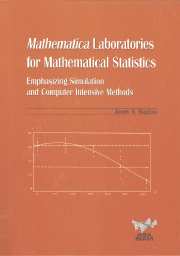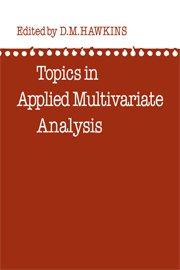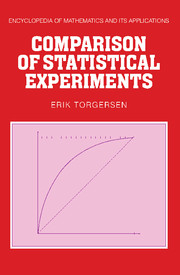Mathematica Laboratories for Mathematical Statistics with CD-ROM
Integrating computers into mathematical statistics courses allows students to simulate experiments and visualize their results, handle larger data sets, analyze data more quickly, and compare the results of classical methods of data analysis with those using alternative techniques. This text presents a concise introduction to the concepts of probability theory and mathematical statistics. The accompanying in-class and take-home computer laboratory activities reinforce the techniques introduced in the text and are accessible to students with little or no experience with Mathematica. These laboratory materials present applications in a variety of real-world settings, with data from epidemiology, environmental sciences, medicine, social sciences, physical sciences, manufacturing, engineering, marketing, and sports. Included in the book are parametric, nonparametric, permutation, bootstrap and diagnostic methods. Permutation and bootstrap methods are discussed side by side with classical methods in the later chapters. Includes a CD-ROM with 238 laboratory problems written as Mathematica notebooks.
- Written with both the instructor and the student in mind, with a similar order of topics and level of presentation to other mathematical statistics books, and thus easily incorporated in the classroom
- Accompanying student CD of laboratory activities, written as Mathematica notebooks, containing text, data, computations, and graphics
- Over half of the 238 laboratory problems use real-world data, many from recent research reports or on-going research
Reviews & endorsements
'Jenny Baglivo's book and its Mathematica labs now make it easy to teach a modern course that better prepares students for contemporary statistical thinking and practice. That alone would be a major contribution to statistics education, but this book offers more: it is thoughtfully organized and unusually well-crafted. For example, theorems are given helpful descriptive names, and are often presented in ways that highlight parallel structure and make the big picture easier to see.' George W. Cobb, Mount Holyoke College
'I particularly value that the emphasis of the labs is on the statistical concepts and not on programming in Mathematica. The Mathematica tools and needed commands are carefully developed so that students with a minimal knowledge of the Mathematica environment can focus on the ideas while those who have more experience with Mathematica can utilize its power. This text is an important addition to materials for the post-calculus probability and statistics courses.' Adele Marie Rothan, College of St. Catherine
Product details
November 2004Mixed media product
9780898715668
184 pages
253 × 178 × 15 mm
0.522kg
This item is not supplied by Cambridge University Press in your region. Please contact Soc for Industrial & Applied Mathematics for availability.
Table of Contents
- Preface
- 1. Introductory probability concepts
- 2. Discrete probability distributions
- 3. Continuous probability distributions
- 4. Mathematical expectation
- 5. Limit theorems
- 6. Transition to statistics
- 7. Estimation theory
- 8. Hypothesis testing theory
- 9. Order statistics and quantiles
- 10. Two sample analysis
- 11. Permutation analysis
- 12. Bootstrap analysis
- 13. Multiple sample analysis
- 14. Linear least squares analysis
- 15. Contingency table analysis
- Bibliography
- Index.






